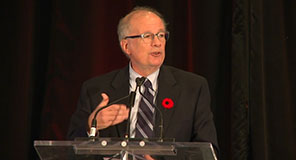 By Akaisha Kaderli, RetireEarlyLifestyle.com
By Akaisha Kaderli, RetireEarlyLifestyle.com
Special to the Financial Independence Hub
Stuff, stuff, and more stuff!
My sisters and I were fortunate.
My Mother was a very forward-thinking individual. Years before she (and my Father) died, Mom started going through her closets, her paperwork, her jewelry, the items in her safe, her garden area and the storage shed next to it.
She tossed items that were outdated, expired, and the things that were no longer useful to her household. She gave away cherished items, met with a lawyer, updated her will, and made funeral arrangements.
Neighbors and friends thought it was odd but comforted themselves by saying “that’s just Betty.”
Mom, on the other hand, knew exactly what she was doing.
The years were passing by, and she didn’t want her daughters to be burdened with having to clear out piles of stuff from her home after she and her husband died. She had the foresight to put her affairs in order before the events of their deaths.
These days, the courtesy and care of what my Mom was doing now has a name. It’s called dostadning, a hybrid of the Swedish words for death and cleaning.
Not everyone is on board
My Father was much more of a patterned man. He liked his routines and his schedule. Mom? She was a tornado.
I truly think it made him nervous to have familiar (but no longer useful) items be given away or tossed out. He learned long ago not to quibble, and he picked his battles. He didn’t help Mom prepare for the inevitable, but he didn’t stand in her way, either.
Differing styles of dealing with life and death
Over the years since my parents’ passing I have watched friends and other family members deal with the demise of loved ones: in-laws, close friends, siblings or their own Mother or Father. In every case, the chaos left after a death was totally overwhelming.
In the situations where the loved one downsized after retirement, it was easier. Few people would carry pay stubs from the 1940’s into a newer, smaller home. But that was not always the case.
Many people get comfortable – not being able to let go of the past – with children’s bedrooms not touched since they left the house and married. Or countless boxes in the attic of holiday items that are no longer used, or grandchildren’s drawings and painted rocks jealously kept for their loving memories.
All well and good … except that when one passes on, these mementos are left for family members to sort out.
When the adult children go through all this — stuff — full-blown emotional meltdowns or something close to it can happen during the process. Sorting through a loved one’s home after a death is the last thing anyone feels like doing.
Morbid or renewing?
I get it.
No one wants to be chased by the idea of the Grim Reaper at their door. But keeping what you love – and getting rid of what you don’t – isn’t morbid. It’s more like a relief, like a renewal.
There is something very empowering and healthy about taking care of your own space and making it more organized. Clutter is really just a bunch of decisions that you’ve put off making. Most of the junk we have is simply stuff screaming out for a place to be or a decision to be made. Keep it (not countless duplicates) in its place or get rid of it.
Approaches to clearing your clutter
There are lots of ways to get started. There’s the brutal approach, the simple approach, and everything in between.
Brutal begins like this: If your home burned down, what would you replace? Continue Reading…








